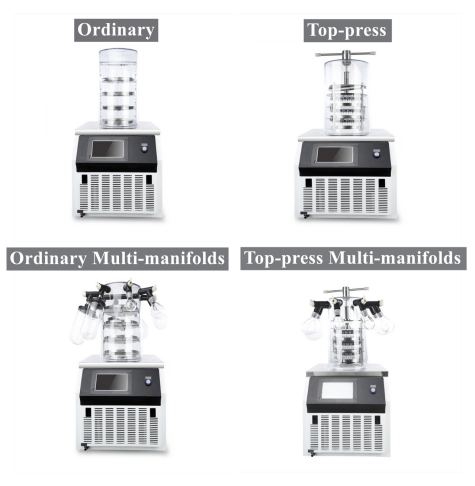Spray dryers and freeze dryers are both essential instruments in the world of substance drying, each with distinct applications and equipment features. This article aims to elucidate the disparities between spray dryers and freeze dryers and highlight their respective advantages.
Spray Drying
Spray drying is a systematic technology used for material drying. In this method, a liquid solution or emulsion is atomized within a drying chamber. As the fine mist of liquid encounters hot air, rapid water evaporation occurs, yielding a dry product. This process can directly transform solutions and emulsions into powders or granular products, eliminating the need for separate evaporation, crushing, and other processes.
The fundamental principle involves dispersing the material into ultra-fine particles resembling mist through mechanical means, thus increasing the water's evaporation surface area and hastening the drying process. Most of the water is instantly removed upon contact with hot air, leaving the solid components dry in powder form.

Spray drying operates at high temperatures, enabling swift moisture evaporation and producing a superior drying effect. Simultaneously, the resulting particles are relatively uniform in size and possess excellent flow properties.
This method is particularly beneficial for preserving the nutritional value of substances that are heat-sensitive. In cases where high temperatures are necessary to eliminate specific substances, such as trypsin inhibitors in soybeans, spray drying technology is an ideal choice. The process effectively converts liquids into powders while preserving the taste, color, and nutritional content of food, all while removing microbial contamination.
Apart from moisture removal, spray drying has various other applications, including altering substance size, shape, or density, facilitating ingredient addition in production processes, and aiding in the creation of products adhering to strict quality standards. Notably, fruit and vegetable powders produced via spray drying retain the nutritional content of fresh produce while reducing volume for convenient consumption and transportation.
For reference, here's a nutritional comparison between fresh pumpkin and spray-dried pumpkin powder:
Drying technology varies between high-temperature and low-temperature drying. While spray drying employs high-temperature spraying, there are situations where low-temperature freeze-drying, or freeze drying, is a more appropriate choice.
Advantages of Freeze Drying
Freeze drying, also known as sublimation drying, involves freezing a water-containing material below its freezing point, turning the water into ice, and subsequently transforming the ice into vapor under a high vacuum to remove it. Materials can either be pre-frozen and then dried or frozen directly within the drying chamber under rapid evacuation. The water vapor resulting from sublimation is removed via a condenser, with the necessary heat for vaporization supplied through thermal radiation.
The fundamental principle of laboratory freeze dryer capitalizes on the three phases of water, where point O signifies the common point of all three phases and OA represents the melting point of ice. By reducing pressure below the triple point pressure (below 646.5Pa, at a temperature below 0°C), moisture in materials can directly transition from water to water vapor without passing through a liquid phase.

By applying this principle, wet raw materials can be frozen below their freezing point, causing moisture to solidify into ice. In a suitable vacuum environment, this ice is then sublimated directly into vapor, with the water vapor being condensed by a condenser, thus achieving effective drying.
Freeze drying offers several advantages:
Suitability for Heat-Sensitive Substances: Operating at low temperatures makes freeze drying ideal for preserving the integrity of heat-sensitive materials such as proteins and microorganisms, ensuring they do not denature or lose biological activity.
Minimal Loss of Volatile Components: The low-temperature drying process minimizes the loss of volatile components in substances, making it suitable for drying chemical products, medicines, and food items.
Preservation of Original Properties: Freeze drying prevents the growth of microorganisms and the action of enzymes, allowing the original properties of substances to be maintained.
Maintenance of Original Structure: The frozen state preserves the substance's volume and structure, preventing condensation and maintaining its original form.
Rapid Reconstitution: Freeze-dried substances, resembling sponges, dissolve quickly and revert to their original state when rehydrated.
Oxygen Protection: Drying under vacuum conditions minimizes oxygen exposure, preserving easily oxidized substances.
Long Shelf Life: Freeze drying removes over 95-99% of water, facilitating long-term storage without deterioration.
In summary, spray dryers and freeze dryers each possess unique strengths and drawbacks. Spray drying offers rapid moisture removal and uniform particle sizes but involves high temperatures. In contrast, freeze drying operates at low temperatures, preserving delicate substances, but the process can be time-consuming. The choice between the two depends on the specific needs of the application and the characteristics of the material being dried.










Comments (0)